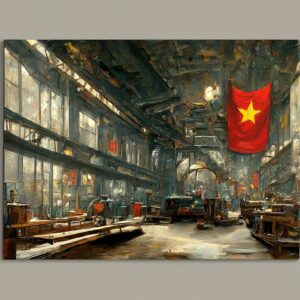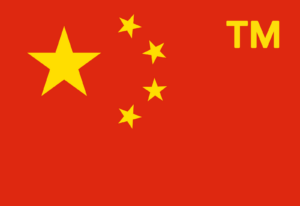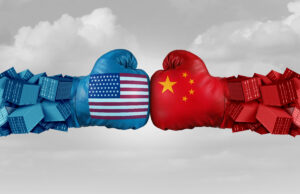A number of our clients have been calling us for what they usually call “China briefings” or “China updates.” They mostly want to know what our China lawyers are hearing is happening to foreign companies in China. These calls usually consist of one of our China lawyers listing out the most recent things our firm is hearing about China and then our client asking questions regarding some of the things they themselves are hearing.
1. What Our Lawyers are Seeing and Hearing in China
1. Will China kick out American companies doing business in China? My answer to this is still a resounding no. At least for now. If China were going to kick out American companies doing business in China it likely would have done that a long time ago and it hasn’t, largely because it does not want to kick out the jobs and the technology those companies contribute to China. I am always getting asked this question but I have not heard of one instance in which it has happened simply because the company was American. Or European. There was a time (can you say Meng Wenzhou?) when Canadian companies were clearly in the CCP’s crosshairs, but even that has passed. American companies — actually all foreign companies — absolutely need to be on their best behaviour in China, but there is a big difference between that and being shut down just for being American.
2. What is going on between China and the United States and between China and the EU? I am telling our clients now what I have been telling them pretty much since the US-China trade war started: The U.S. and China (and the EU!) are in a technological and geopolitical war with China and so things are likely to get even tougher for foreign companies that do business in or with China. Companies should be planning accordingly, and most are.
3. Are foreign companies leaving China? Foreign companies that can leave China have already left China or are in the process of leaving. Pretty much all of our clients that manufacture in China want to leave China, but for many it is just too expensive and/or difficult to do so, at least at all quickly. Pretty much all of our clients that are in China and making money in China do not want to leave, but they do want to reduce their footprint there.
4. Are foreign companies moving their production outside China? Absolutely they are. All sorts of companies are and all sorts of our clients are. Some are telling their Chinese manufacturers to set up factories elsewhere and some of these Chinese manufacturers have done so — mostly in Vietnam, Cambodia, Thailand, Malaysia, Mexico, and Pakistan, and the Philippines. Some are planning to reduce production in their own China factories as they work to set up new factories outside China — mostly in Vietnam, Turkey, Thailand and Mexico. Some have simply shifted their contract manufacturing from China to Vietnam, Thailand, Malaysia, India, Sri Lanka, Mexico, and Taiwan. Ukraine was actually getting some manufacturing, but that ended when Russia went to war.
5. What about product pricing? What are Chinese manufacturers doing on this? We are seeing everything. We have some clients who are being refused any discount whatsoever from their Chinese suppliers and we have other clients who are getting big discounts from their suppliers and we have everything in between. Most are in between. We have helped clients negotiate discounts by convincing their Chinese suppliers that they are going to be leaving. I am telling my clients that now is a really good time to get better prices from their Chinese suppliers, but they must do so in a way that does not cause their supplier to go ballistic and start stealing IP or competing. Hell hath no fury like a Chinese manufacturer scorned and threatening to pull production is often viewed as scorn.
6. What is happening on the tech side? Everyone is unbelievably cautious, which is exactly how the Biden administration wants it. The deals have dried up. In a typical year our M&A lawyers would handle maybe a half dozen China transactions, mostly involving Chinese companies buying American or European companies or investing in them. This year I cannot think of even one. Chinese foreign investment in the United States and Europe has plunged. The same holds true on the flip side. Technology licensing deals are way down as well, though strangely enough we recently got a number of these; I’m not sure if this is a one-time dead-cat bounce type of thing or if companies have now realized that M&A is out and licensing is the next best thing.
7. Is China cracking down on foreign companies? What about China’s list of unreliable companies? Whenever China has problems with a foreign country or with its own economy (both of which are happening in spades right now), it starts cracking down on foreign companies. This is nothing new and this sort of thing can almost always be avoided by making sure you and your company fully comply with Chinese laws. See Want to Keep Your Business in China? Do These Things NOW. A number of our clients have asked us to audit what they are doing in China to “make sure they are doing what they should be doing.” We typically suggest they have us do some or all of the following:
a. Make sure their WFOE actually exists and is licensed to do what it is actually doing.
b. Make sure they have the proper entities and licenses to do business in every city in which it is doing business.
c. Make sure its trademarks and other IP have been filed in China.
d. Have us conduct an employer audit to make sure it is doing everything right on the employee side.
e. Make sure it is current with its taxes.
f. Review lease agreements.
g. Review contracts signed by the WFOE or by the parent company relating to China operations.
h. Due diligence on suppliers/manufacturers and distributors, retailers, and e-commerce platforms to make sure that those relationships do not violate home country (U.S. or EU or Australian) laws and to make sure that those companies are financially sound.
2. A Must-Read Wall Street Journal Article on Foreign Companies Desperate to Move their Manufacturing from China
The genesis for this post was a terrific Wall Street Journal article: An American Helped Build a Business Inside China. Clients Want Him to Leave.
I found this article terrific both because it was and because I have written that same article in my head multiple times (though not nearly as well). I have been interviewed at least a half dozen times by reporters asking me about what I am seeing regarding foreign companies manufacturing in China, and I always tell them the same thing:
— All of our clients that manufacture in China WANT to get out of China and they have wanted to do so for years. But for most of them it is too expensive or difficult or even impossible for them to leave China. Most of them are staying.
— All of our clients would like to reduce their dependence on China, but for many of them even this is too difficult or expensive or flat out impossible. But we are definitely seeing an increase in companies trying to diversify. If I had to sum up the results of this diversification (and leaving), it virtually always starts out with difficulties but almost always within a year the company is ecstatic to be out.
— Even our clients that are completely out of China and delighted to be out are not likely to talk to the media because they are terrified of getting on the wrong side of China. Many of these companies that have moved out of China completely, still from time to time need to buy products from there. For example, we have a client that moved its manufacturing from China to Mexico and then all of a sudden learned that it would need to get one tiny part (a spring) from China.
I mention all this because what is so amazing about the Wall Street Journal article is how great it is that someone was willing to speak so honestly about their China situation and how well the entire article describes EXACTLY what I have been seeing and hearing. I swear that I could replace the protagonist of this Wall Street Journal article with dozens of my law firm’s own clients and the article would be virtually the same.
Here are the highlights from the article, with my own comments in italics. I urge you to read the entire article.
1. Jacob Rothman spent two decades building a Chinese manufacturing business. Now this American executive says customers want him to make some of his grilling tools and kitchen products elsewhere. He knows it isn’t going to be easy.“There’s not a customer that we have that isn’t pressuring us, suggesting, hoping that we will build factories outside of China,” says Rothman. Our clients that supply to others are hearing the same thing. Strangely enough, it reminds me of about 15 years ago when our clients were being told by their customers that if they didn’t go into China, they would be replaced.
2. Investment by American companies in China is plunging. U.S. firms invested $13 billion there in 2019, down from a 2012 high point of $15.4 billion, according to data compiled by research group Rhodium Group. Investment then sank to just $8.4 billion last year. This should surprise no one.
3. “It isn’t going to be easy for the U.S. to wean itself from China.” Though the value of U.S. imports from China is down from 22% of all U.S. imports in 2017 to 17% today, that is still a quite hefty percentage.
4. “Shifting away from China presents numerous challenges, as Mr. Rothman says he is discovering. His company has expanded into Cambodia and entered joint ventures in Vietnam and India in recent years. Mr. Rothman says he has also been scoping out factories in Mexico and Turkey and looking at the potential of the Philippines. His company employs roughly 1,200 among its six mainland China factories and 600 outside China. Each option has drawbacks. Cambodia and Vietnam are promising but far smaller in terms of capacity and population, he says. Factories in Vietnam are already jam-packed and have limited available space. Turkey has gleaming, high-tech factories but is beset by rampant inflation, complicating the management of costs and pricing. India has huge potential but needs newer infrastructure, such as better roads, Mr. Rothman says. No country can compete with the scale and sophistication of China’s infrastructure, he says. Getting the right factories, people, equipment and raw material supplies to come together is like “landing a jet on an aircraft carrier.” So true. No one company is going to replace China and this is what makes things so difficult. Auto parts? Mexico and Thailand are relatively easy choices. Blue Jeans? Mexico and Vietnam? Electronics? Who knows? Baseball hats? Cambodia, Sri Lanka and Pakistan. Small electric motors? Who knows?
5. “A spokeswoman for Walmart says the company’s sourcing approach “includes a variety of complementary strategies and relationships with both established and new suppliers.” The other companies didn’t respond to requests for comment.” Sorry, but I just love this paragraph. I love it because Walmart manages to appear to say something but really says absolutely nothing and nobody else will go on the record. This is what I mean when I say that companies do not want their China business out there. The article then details how Rothman’s company suffered at the beginning of the pandemic and then sales of his outdoor grills soared when everyone was spending on their homes. But then “high inflation and rising interest rates helped depress consumer demand, slowing orders for new goods.” Just last week, in Navigating Sinosure Claims Just Got Tougher, I described how exactly this was leading to big problems with Sinosure (China’s export insurance company):
a. The typical Sinosure case has changed. In the last three months the composite of our typical Sinosure case our lawyers are seeing is the following:
b. Foreign company (for purposes of this example, a U.S. company) bought $10 million of widgets from three different Chinese manufacturers. Foreign company bought more than it usually buys because demand was so high and COVID lockdowns and/or shipping delays were slowing down its widget deliveries.
c. U.S company pays Chinese companies a total of $3 million upfront for the widgets, with the remaining $7 million to be paid in 30, 60 or 90 days after delivery.
d. The widgets that arrive in the United States arrive way late, and in the meantime, demand for the American company’s widgets have greatly declined, largely due to the economy having gone into a downturn.
e. The U.S. company tries to negotiate new payment terms with its Chinese suppliers, but that does not go terribly well.=
6. Rothman’s joint venture in Vietnam makes chopping boards and charging cables and his India JV makes brassware and wrought-iron home decorations. “But none of these places can compete with China, according to Mr. Rothman, who says he has toured factories in Vietnam, India and Mexico where assembly lines are poorly organized and easily-automated tasks such as cutting and polishing sheets of metal are done by hand, limiting the speed of production. In Mexico, he says, he can’t get the type of plastic needed to make grill or outdoor furniture covers; it has to come from China. In Vietnam and Cambodia, he says he needs to ship in steel and electronic components such as temperature sensors for thermometers. They also come from China, he says.” Moving production from China that took 2o or so years to hone is not going to be easy. Remember what your first years were like in China and be patient. “Decoupling from China “is going to happen in dribs and drabs. And it’s going to increase over time. But it isn’t going to be easy.”
7. The pressures to look elsewhere aren’t abating this year, as inflation surges and a war rages in Ukraine. Customers are losing confidence in China. “2022 feels like a turning point: The world may no longer rely on China as the world’s factory floor going forward.” This is indeed happening and the longer companies wait to move out of China the more difficult and expensive it will be. Our clients that moved production to Vietnam 3-8 years ago are loving it. Those trying to move their production there now are finding the country near full capacity. This is going to happen with other countries as well.
8. “I don’t want to leave here. I’ve invested 20 years of my life here. But I will, if I have to,” Rothman says. I do not know Mr. Rothman at all, but I would bet money that he will be out of China within five years.
What are you seeing with China these days?

























